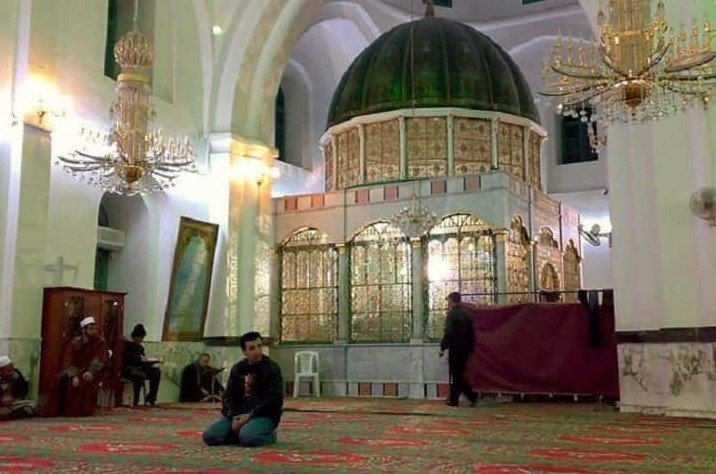After Two Decades in a Coma, a Royal Life Ends — But the Symbolism Endures
In the fading Riyadh sun on Sunday evening, grief hung in the air like dust. At Imam Turki bin Abdullah Mosque, hundreds of mourners gathered—royals in ceremonial white, security forces standing respectfully in line, and family members with quiet faces—to lay to rest Prince Alwaleed bin Khalid bin Talal Al Saud, the royal known to Saudis as the “Sleeping Prince.”
His funeral prayer, held July 20, came one day after the Royal Court confirmed his death following an extraordinary 19-year coma. At just 15 years old, the prince had been a cadet at a military academy in London when his car struck tragedy. In the years since, he came to symbolize something deeply human in the Saudi imagination: suspended life, unwavering family devotion, and a hope that defied prognosis.
A Prince the Nation Never Forgot
Born in 1990 to Prince Khaled bin Talal—a vocal royal figure known for his philanthropy and conservative views—Prince Alwaleed’s early years were much like other members of the House of Saud. Groomed for service, educated abroad, and destined for military leadership, he was well on his way when the 2005 accident in London changed everything.
The traumatic brain injury he suffered resulted in a coma that lasted nearly two decades. In that time, images of him—silent, sometimes blinking, often attached to tubes—circulated on social media every few years, as his father issued cautious updates or posted videos showing the prince’s faint, instinctive movements.
He never regained full consciousness. But he never left the public eye either.

A Family’s Vigil, A Nation’s Reflection
Prince Khaled bin Talal, known for both his business investments and piety, refused to give up hope. The prince was moved back to Riyadh after initial treatment abroad, and from 2005 until 2025, the family transformed part of a royal medical compound into a long-term care suite.
“His father believed in divine will, that if God willed it, Alwaleed would wake,” said a senior Saudi medical advisor familiar with the family’s care arrangements, who requested anonymity due to the sensitivity of the matter. “And that belief anchored him.”
At various points, rumors swirled that the prince had died. Each time, his family refuted them. Each time, Saudis whispered his name again, often attaching to it the painful phrase “Al-Amir Al-Naa’im” — the Sleeping Prince.
Quiet Dignitaries, Public Grief
Sunday’s funeral was subdued but high-profile. Crown Prince Mohammed bin Salman did not attend in person—he was reportedly abroad on diplomatic visits—but sent senior royal court members in his place. Among those present were Prince Turki bin Talal, Prince Abdulaziz bin Salman, and other notable members of the extended Al Saud dynasty. The Saudi National Guard, long connected to internal royal security, stood vigil near the funeral site.
Condolences flowed in from across the region. UAE President Mohamed bin Zayed Al Nahyan sent a personal message of support to Prince Khaled. Kuwait’s Crown Prince, Sheikh Mishal Al-Ahmad Al-Jaber Al-Sabah, issued a statement expressing sorrow “for the loss of a young man who became a symbol of faith and endurance.”
In Memoriam: Life of Prince Alwaleed bin Khalid
| Milestone | Date | Details |
|---|---|---|
| Birth | 1990 | Born in Riyadh to Prince Khaled bin Talal Al Saud |
| London Car Accident | 2005 | Suffered TBI at age 15 while attending military college |
| Transferred to Riyadh | Late 2005 | Returned to Saudi Arabia for long-term care |
| Viral Video of Eye Movement | 2019 | Sparked renewed public interest and emotional reaction |
| Death | July 19, 2025 | Officially declared by Saudi Royal Court |
| Funeral | July 20, 2025 | Held at Imam Turki bin Abdullah Mosque, Riyadh |
What Made Him a Cultural Icon
Saudi Arabia has known its share of royal loss. But few cases have resonated with such emotional longevity. Alwaleed’s prolonged coma became more than a family tragedy. For many Saudis, his state was an allegory—about patience, divine tests, and the fragility of power and privilege.
A 2016 university survey by King Saud University found that nearly 72% of respondents aged 18 to 35 recognized Prince Alwaleed as “a personal symbol of faith,” despite his lack of public appearances. Online, #SleepingPrince trended repeatedly over the years—especially after occasional videos released by his father appeared to show slight reactions to sound or touch.
Public sentiment toward Alwaleed became tied to three emotions:
-
Hope: Many believed he would wake one day.
-
Pity: His youth and circumstance drew empathy.
-
Faith: His story was invoked in Friday sermons, as a test of divine will.
A Private Goodbye, A Public Memory
While Sunday’s funeral was an official event, the burial itself was private. Only close family members were allowed at the Al Oud cemetery, where several Saudi royals are buried. No photographs were released of the final interment, in line with the family’s preference for discretion in his last moments.
In the hours following the funeral, Saudis flocked to social media to share memories. Not personal encounters, but feelings—about watching his videos, about his father’s devotion, about how a young royal they never knew managed to leave such a mark.
The last publicly released clip of Prince Alwaleed was in 2021, showing him blinking faintly in response to his father’s voice. The footage, just 12 seconds long, has since resurfaced. Viewed now, it feels less like a medical update and more like a final wave.
